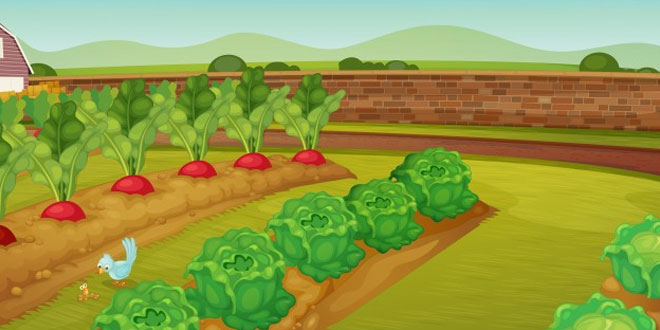Question: What were the advantages and disadvantages of the use of mechanical harvesting machines in the USA?
Answer: Advantages Disadvantages:
For the big farmers of the Great Plains the mechanical harvesting machines had many attractions. The prices of wheat were high and the demand seemed limitless. The new machines allowed these big farmers to rapidly clear large tracts, break up the soil, remove the grass and prepare the ground for cultivation. The work could be done quickly and with a minimal number of hands. With power-driven machinery, four men could plough, seed and harvest 2,000 to 4,000 acres of wheat in a season.For the poorer farmers, machines brought misery. Many of them bought these machines, imagining that wheat prices would remain high and profits would flow in. If they had no money, the banks offered loans. Those who borrowed found it difficult to pay back their debts. Many of them deserted their farms and looked for jobs elsewhere. But jobs were difficult to find. Mechanization had reduced the need for labor. And the boom of the late nineteenth and early twentieth centuries seemed to have come to an end by the mid- 1920s. After that, most farmers faced trouble. Production had expanded so rapidly during the war and post-war years that that there was a large surplus. Unsold stocks piled up, storehouses overflowed with grain, and vast amounts of corn and wheat were turned into animal feed. Wheat prices fell and export markets collapsed. This created the grounds for the Great Agrarian Depression of the 1930s that ruined wheat farmers everywhere.
Question: What lessons can we draw from the conversion of the countryside in the USA from a bread basket to a dust bowl?
Answer: At the time that common fields were being enclosed in England at the end of the eighteenth century, settled agriculture had not developed on any extensive scale in the USA. Forests covered over 800 million acres and grasslands 600 million acres. Most of the landscape was not under the control of white Americans. Till the 1780s, white American settlements were confined to a small narrow strip of coastal land in the east. Several of them were nomadic and some were settled. By the early twentieth century, this landscape had transformed radically. White Americans had moved westward and established control up to the west coast, displacing local tribes and carving out the entire landscape into different agricultural belts. The USA had come to dominate the world market in agricultural produce.
The expansion of wheat agriculture in the Great Plains created other problems. In the 1930s, terrifying dust storms began to blow over the southern plains. Black blizzards rolled in, very often 7,000 to 8,000 feet high, rising like monstrous waves of muddy water. They came day after day, year after year, through the 1930s. As the skies darkened, and the dust swept in, people were blinded and choked. Cattle were suffocated to death; their lungs caked with dust and mud. Sand buried fences, covered fields, and coated the surfaces of rivers till the fish died. Dead bodies of birds and animals were strewn all over the landscape. Tractors and machines that had ploughed the earth and harvested the wheat in the 1920s were now clogged with dust, damaged beyond repair. They had to undergo persistent drought. The rains failed year after year, and temperatures soared. The wind blew with ferocious speed. But ordinary dust storms became black blizzards only because the entire landscape had been ploughed over, stripped of all grass that held it together. When wheat cultivation had expanded dramatically in the early nineteenth century, zealous farmers had recklessly uprooted all vegetation, and tractors had turned the soil over, and broken the sod into dust. The whole region had become a dust bowl. The American dream of a land of plenty had turned into a nightmare. The settlers had thought that they could conquer the entire landscape, turn all land over to growing crops that could yield profits. After the 1930s, they realized that they had to respect the ecological conditions of each region.
Question: Write a paragraph on why the British insisted on farmers growing opium in India.
Answer: When the British conquered Bengal, they made a determined effort to produce opium in the lands under their control. As the market for opium expanded in China, larger volumes of opium flowed out of Bengal ports. Before 1767, no more than 500 chests were being exported from India. Within four years, the quantity trebled. A hundred years later, in 1870, the government was exporting about 50,000 chests annually. Supplies had to be increased to feed this booming export trade. But this was not easy. For a variety of reasons, they were unwilling to turn their fields over to poppy. First, the crop had to be grown on the best land, on fields that lay near villages and were well manured. On this land peasants usually produced pulses. If they planted opium on this land, then pulses could not be grown there, or they would have to be grown on inferior land where harvests were poorer and uncertain. Second, many cultivators owned no land. To cultivate, they had to pay rent and lease land from landlords. And the rent charged on good lands near villages was very high. Third, the cultivation of opium was a difficult process. The plant was delicate, and cultivators had to spend long hours nurturing it. This meant that they did not have enough time to care for other crops. Finally, the price the government paid to the cultivators for the opium they produced was very low. It was unprofitable for cultivators to grow opium at that price.
 Class Notes NCERT Solutions for CBSE Students
Class Notes NCERT Solutions for CBSE Students



